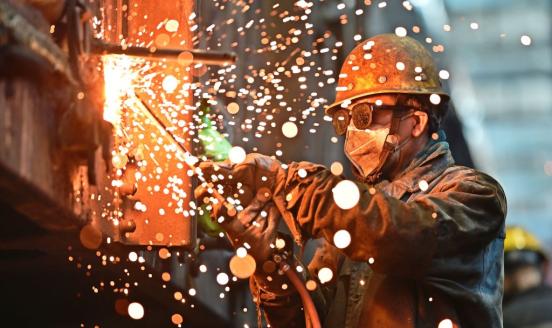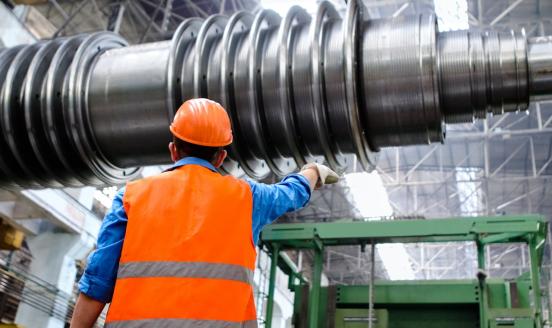EU trade in medical goods: why self-sufficiency is the wrong approach
As countries are struggling with the COVID-19 pandemic, shortages in medical equipment led to EU export controls and war-time like procurement of resp

The European Union has enacted war-like procurement measures to counter shortages of personal protective equipment (PPE) during the COVID-19 crisis. Automotive and apparel companies are producing respirators and face masks, respectively. Meanwhile, countries are trying to prevent shortages of these goods, with Germany and France enacting export bans. The production of PPE in the EU is highly concentrated, with only the Czech Republic, France, Germany and Poland producing these goods on a large scale. To coordinate this response, the European Commission imposed EU-wide export controls. Questions are being asked about whether or not the EU should produce more of its own medical supplies beyond the current emergency procurement, and if it should reduce reliance on global supply chains. We argue that such measures should only be used in a limited way. As one of the largest producers of medical goods, the EU should avoid protectionism and should support global supply chains, with widespread research and production of medicine and medical equipment. Global markets for medical goods benefit the EU economically and also lead to knowledge sharing and specialisation that will help stem future epidemics. Stockpiling and preparation would have been a far more effective approach to prevent the shortages the EU is now experiencing, without any of the downside effects that domestic production requirements entail.
EU trade in medical goods
The EU is a net importer of COVID-19 related PPE. In 2019, it imported $17.6 billion worth of these goods and exported $12.1 billion. However, looking at the broader picture, the EU is one of the leaders in terms of trade in high-tech medical goods. Its share of global exports of such goods in 2017 was 29% – double the EU’s share of total global exports (15.2%). The EU is also a leading exporter of pharmaceutical goods and vaccines, representing nearly one third of world exports in both categories (Figure 1). For pharmaceutical goods, the EU tends to export standard products and import more advanced ones. This is related to the EU exporting many packaged medicines that are not considered high-tech (according to the United States Census Bureau), whereas the EU exports less high-tech vaccines. In medical equipment, the EU has a 26% share of world exports. In this category, its exports are more geared towards advanced goods, and its imports towards standard products (Figure 1 and Table 1).
In terms of EU trade in medical goods with its biggest partners, the US and China, there are major structural differences in the types of goods being traded. The EU and China sell one another similar shares of high-tech goods: around 40% of total medical goods trade between the two (Table 2). However, it is noticeable that the EU imports nearly no pharmaceutical goods from China, and that in exchanges of medical equipment, the EU tends to sell more advanced goods to China and import less technologically advanced goods. EU-US trade in medical goods is in gross value terms worth much more than the equivalent trade with China. The EU imports more high-tech medical goods from the US than it exports to the US (Table 3).
Buy local?
As European governments experience shortages in procuring some medical goods, there are calls for an industrial policy that moves supply chains back to the EU. Emmanuel Macron wants “European and national sovereignty” and “full independence” in parts of the medical market. Some industry representatives go even further and call for “sanitary sovereignty”. We argue that such protectionist policies would hurt the EU more than it would gain. In parts of the market, local suppliers can be necessary to avoid shortages during an emergency, as currently. In these cases, domestic supply chains should be supported and protected. However, import-substitution policies should only be used carefully for specific products. The form the next epidemic will take is uncertain, while maintaining entire supply chains for a large number of products in the EU would be prohibitively expensive and could lead to major international tension. If the EU subsidised its pharmaceutical companies with the aim of moving entire supply chains of a larger number of goods into the EU, or required healthcare providers to procure medical goods only from EU suppliers, it would effectively close these markets to foreign producers. Some products, such as PPE, can be stockpiled, which makes domestic production less important. The question is more pressing for perishable medicines – goods for which the EU is already one of the largest exporters.
Global supply chains for non-high tech medicines support the development of pharmaceutical companies in emerging markets, leading to more research and skill spillovers, which will allow them to handle better the next pandemic. Modern medicine is highly complex, and there are substantial advantages from global sharing of research and development of drugs and equipment. This implies that there is also a substantial gain from global specialisation, instead of every country trying to cover every part of the medical goods market. Our trade data shows that as one of the most research-intensive regions in the world, the EU has a very strong position in this market. The EU is currently facing difficulties sourcing ‘low-technology’ medical supplies such as masks and protective equipment, but also more advanced products such as respirators. For the potential next stage of the pandemic, during which a vaccine should be administered to the population at mass scale, the situation might be more favourable to the EU because of its existing advantage in producing vaccines (the EU exports around 30% of all vaccines worldwide).
Therefore, we argue that while localisation of production for some specific goods might be necessary to prepare for pandemics, there are substantial advantages to keeping Europe’s markets for medical goods open. Therefore, the strategy should be targeted and should avoid protecting parts of the market where there is no need for local production. Healthcare in the EU already accounts for 10% of GDP, and these costs are likely to rise as Europe’s population continues to age. Production of goods in cheaper countries helps to manage these costs, and frees funds for other areas of healthcare, including pandemic preparation. Precautionary stockpiling of non-perishable medical goods and provision of intensive-care beds and medical testing facilities do not need local production, and would have gone a long way to alleviate the shortages currently experienced. A good example is Finland, where medical stockpiles help it to manage the current crisis. Stockpiling at European level, eg through rescEU and the European Civil Protection Mechanism, could create further efficiency gains and ensure that emergency supplies go to the regions most in need.



